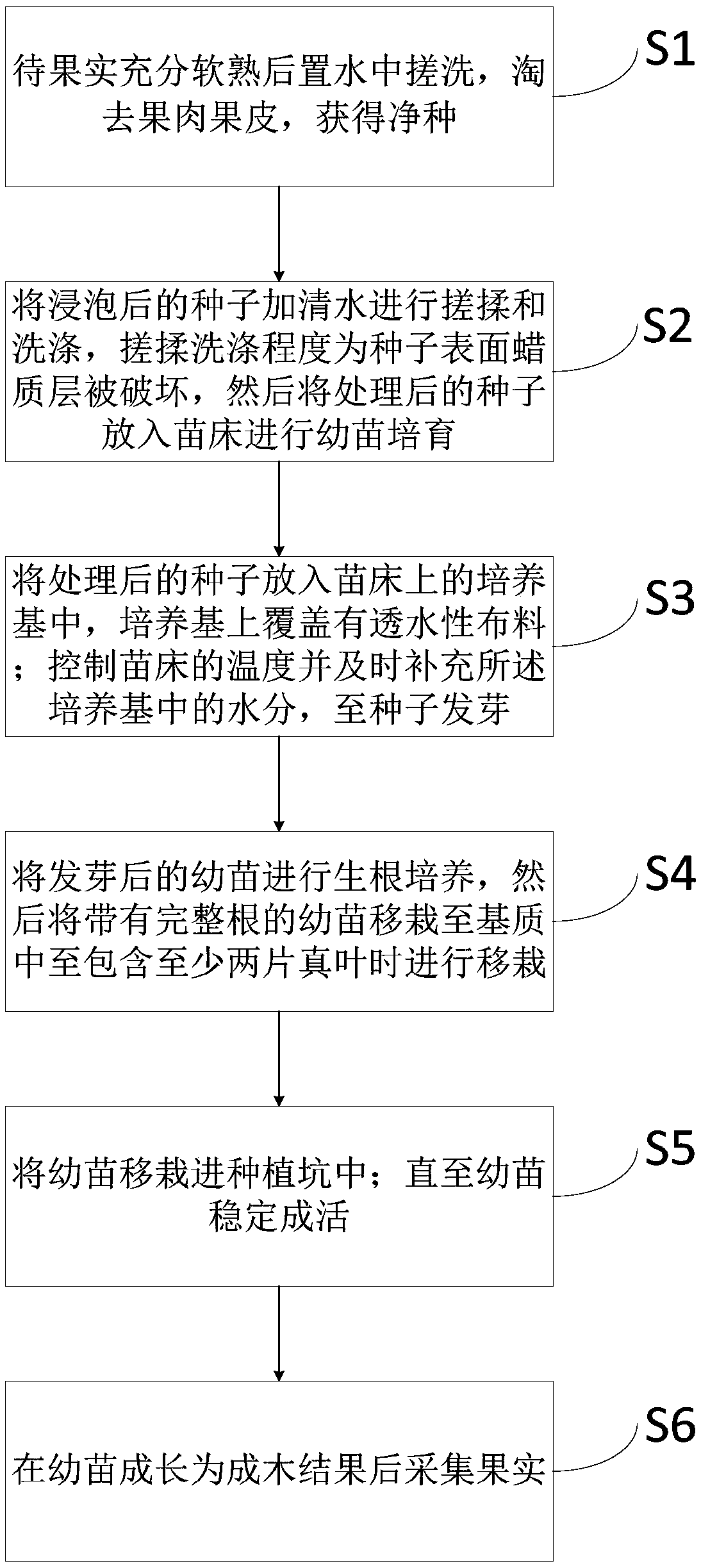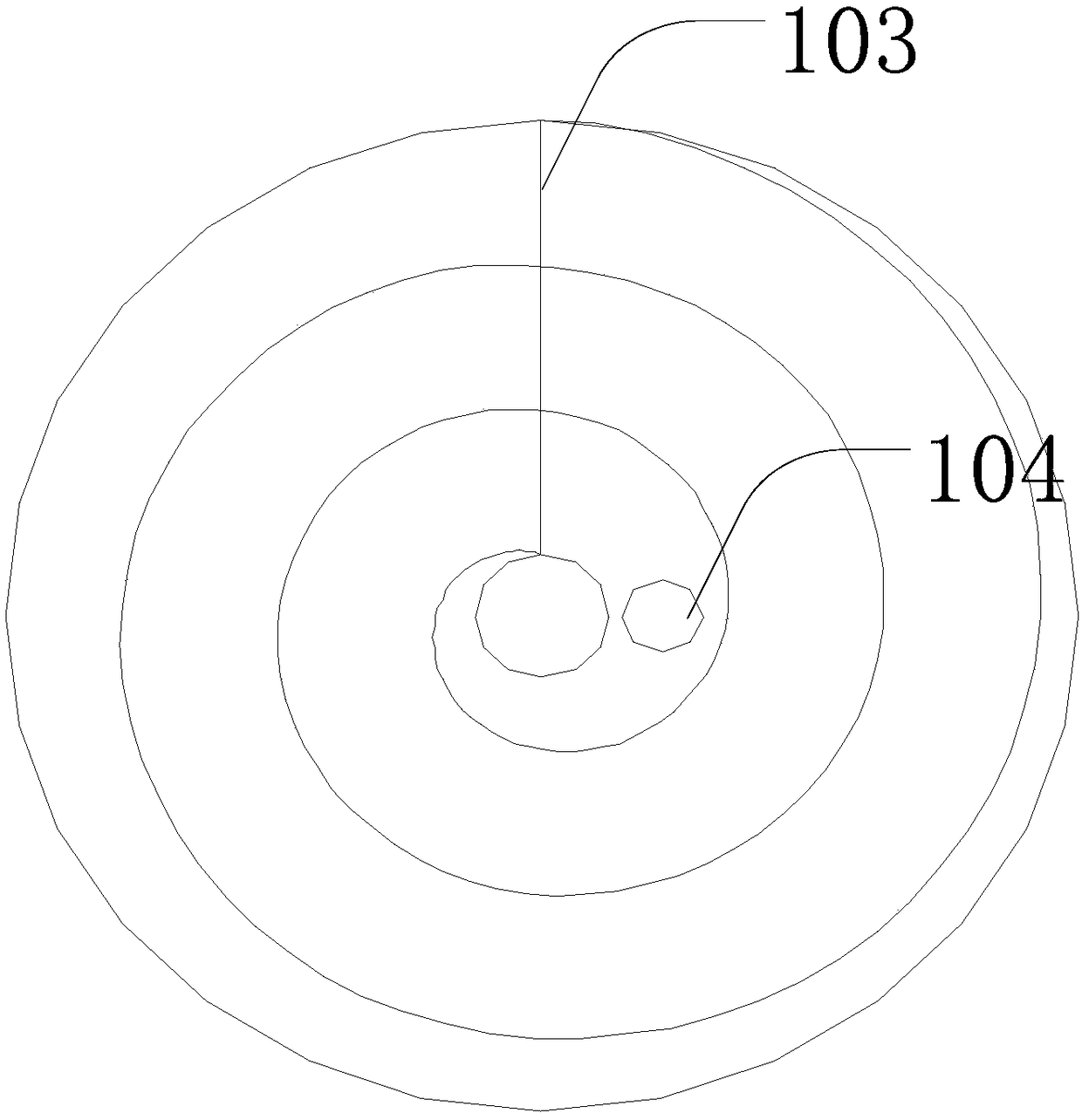Method of planting Idesia polycarpa
A planting method and the technology of shankung, applied in the application, cultivation, agriculture and other directions, can solve the problems of uneven seedling cultivation, unfavorable industrialization promotion, weakened seedling quality, etc., to achieve a high survival rate and speed up the promotion and application. , the effect of high reproduction coefficient
- Summary
- Abstract
- Description
- Claims
- Application Information
AI Technical Summary
Problems solved by technology
Method used
Image
Examples
Embodiment 1
[0075] A planting method of Jatropha tomentosa, characterized in that it comprises steps:
[0076] S1. Select a 15-year-old female plant as the mother tree for seed collection, and harvest it when the fruit turns crimson; cut off the ears, smooth out the berries, and store them indoors for 1-2 days. After the fruits are fully soft, wash them in water and wash them off Pulp and peel to obtain net seeds;
[0077] S2. Soak the net seeds in clear water for 1 hour, then soak them in 1% aqueous sodium bicarbonate solution for 2 hours, then add clear water to the soaked seeds and rub and wash them. The degree of rubbing and washing is the seed surface wax The stratum is destroyed, and then the treated seeds are put into the seedbed for seedling cultivation;
[0078] S3, the seeding rate in terms of dry seeds is 1g / ㎡, put the treated seeds into the culture medium on the seedbed, and the culture medium is covered with water-permeable cloth; control the temperature of the seedbed at 10...
Embodiment 2
[0084] A planting method of Jatropha tomentosa, characterized in that it comprises steps:
[0085] S1. Select a 30-year-old female plant as the mother tree for seed collection, and harvest it when the fruit turns crimson; cut off the ears, smooth out the berries, and stack them indoors for 2 days. , to obtain net seed;
[0086] S2. Soak the net seeds in clear water for 2 hours, then soak them in 10% aqueous sodium bicarbonate solution for 1 hour, then add clear water to the soaked seeds and rub and wash them. The degree of rubbing and washing is the seed surface wax The stratum is destroyed, and then the treated seeds are put into the seedbed for seedling cultivation;
[0087] S3, the seeding rate in terms of dry seeds is 3g / ㎡, the treated seeds are put into the culture medium on the seedbed, and the culture medium is covered with water-permeable cloth; the temperature of the seedbed is controlled at 30°C, and the described Moisture in the culture medium until the seeds germ...
Embodiment 3
[0093] A planting method of Jatropha tomentosa, characterized in that it comprises steps:
[0094] S1. Select a 25-year-old female plant as the mother tree for seed collection, and harvest when the fruit turns crimson; cut off the ears, smooth out the berries, and stack them indoors for 1.5 days. , to obtain net seed;
[0095] S2. Soak the net seeds in clear water for 1.5 hours, then soak them in 5% aqueous sodium bicarbonate solution for 1.5 hours, then add clear water to the soaked seeds and rub and wash them. The degree of rubbing and washing is the seed surface wax. The stratum is destroyed, and then the treated seeds are put into the seedbed for seedling cultivation;
[0096] S3, the seeding rate in terms of dry seeds is 2g / ㎡, the treated seeds are put into the culture medium on the seedbed, and the culture medium is covered with water-permeable cloth; the temperature of the seedbed is controlled at 20°C, and the described Moisture in the culture medium until the seeds ...
PUM
| Property | Measurement | Unit |
|---|---|---|
| Thickness | aaaaa | aaaaa |
| Spacing | aaaaa | aaaaa |
| Depth | aaaaa | aaaaa |
Abstract
Description
Claims
Application Information
 Login to View More
Login to View More - R&D
- Intellectual Property
- Life Sciences
- Materials
- Tech Scout
- Unparalleled Data Quality
- Higher Quality Content
- 60% Fewer Hallucinations
Browse by: Latest US Patents, China's latest patents, Technical Efficacy Thesaurus, Application Domain, Technology Topic, Popular Technical Reports.
© 2025 PatSnap. All rights reserved.Legal|Privacy policy|Modern Slavery Act Transparency Statement|Sitemap|About US| Contact US: help@patsnap.com



